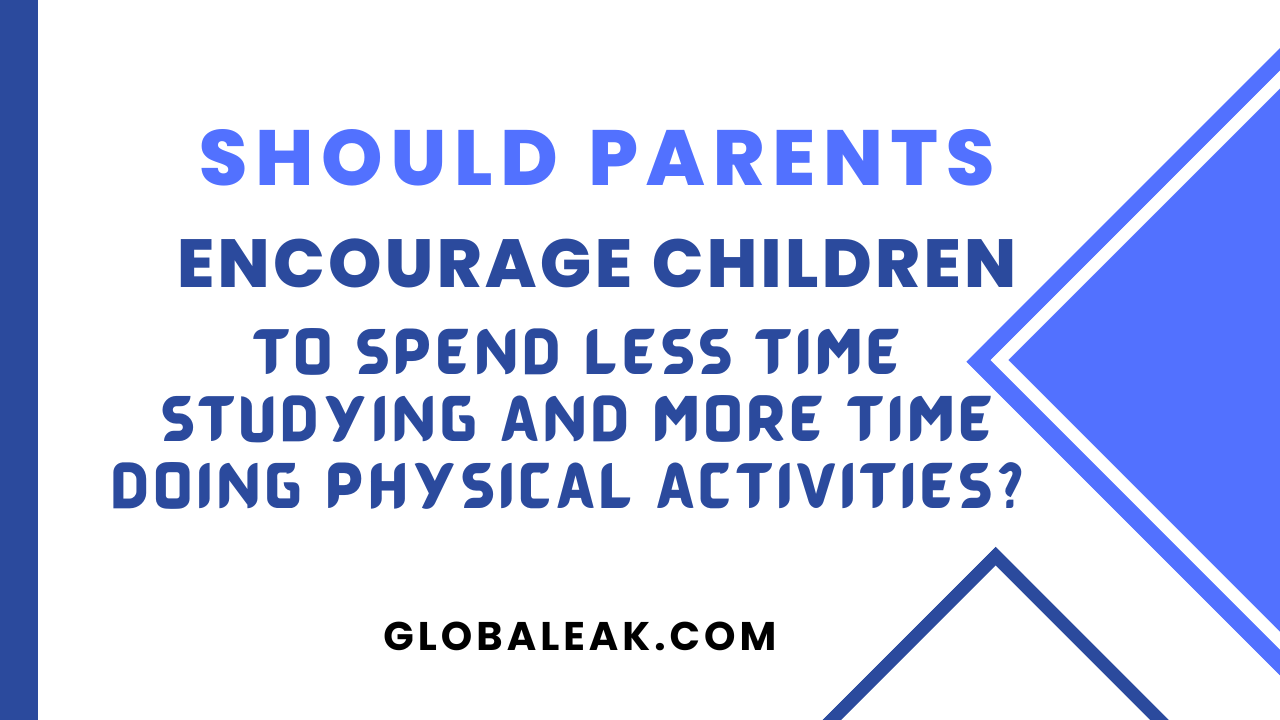Parents should encourage children to spend less time studying and more time doing physical activities. To what extent do you agree or disagree?
A famous Arabian proverb defines the imperative of prioritizing physical health over any other thing. It says that he who has health has hope, and he who has hope has everything. Indubitably, both physical activities and study play crucial roles in a child’s overall development, and upbringing but I agree with the idea that parents should encourage children to spend less time studying and more time doing physical activities. Physical activity is any bodily movement produced by the contraction of skeletal muscles that requires energy expenditure and it is quintessential because it promotes a child’s physical, and mental well-being alongside improving social interaction, teamwork, and communication skills. Executive function and brain health underlie academic performance. Basic cognitive functions related to attention and memory facilitate learning, and these functions are enhanced by physical activity and higher aerobic fitness.
To commence, more and more physical activities be encouraged in children because these are more known to have positive effects on mental health. Exercise releases endorphins, which can help reduce stress, anxiety, and depression. It can also improve mood and cognitive function, ultimately benefiting academic performance. Moreover, regular physical activities are essential for a child’s physical well-being. They help in developing strong bones, muscles, and a healthy cardiovascular system. Encouraging children to be active can contribute to a lifetime of good health habits.
In addition to that, physical activities should be prioritized because they promote social interaction, teamwork, and communication skills in children. These experiences are valuable for a child’s social development and can complement the academic learning environment. With the increasing prevalence of screen time and sedentary activities, encouraging physical activities provides a counterbalance. It helps prevent issues like obesity and related health problems associated with a sedentary lifestyle.
A recent report from the Institute of Medicine asserts that “children who are more active show greater attention, have faster cognitive processing speed, and perform better on standardized academic tests than children who are less active.”
Scientific evidence clarifies that physical inactivity can lead to energy imbalance, increase the risk of factors for cardiovascular disease, including hyperlipidemia, high blood pressure, obesity, and insulin resistance and glucose intolerance. Also, reduced physical activity can lead to low bone density, which in turn, leads to osteoporosis.
Contrary to this, some argue that more time be spent on studying by children as academic achievements are often seen as a critical factor in a child’s future opportunities. Spending sufficient time on studies is essential for acquiring knowledge, developing critical thinking skills, and preparing for future educational and career pursuits. Further, a strong academic foundation is often considered a prerequisite for success in the highly competitive world of higher education and the job market. Some children may have a genuine interest in academic pursuits or certain career paths that require a substantial investment of time in studying. Encouraging their passion and dedication to these goals is crucial for their fulfillment and success.
In conclusion, it is important for parents to be mindful of the unique characteristics of their children and to encourage the children to do more physical activity in order to improve their health, social well-being as well as performance in studies.
Note: National Academy of Medicine, known as the Institute of Medicine until 2015, is an American nonprofit, non-governmental organization.
📍 English Language Educator | Blogger & Content Strategist | 7+ Years in Educational Blogging
Nosheen Bashir is a dedicated English teacher and experienced blogger with over seven years of expertise in content creation and educational writing. Passionate about language, literature, and effective communication, she combines her teaching experience with blogging skills to create insightful, research-backed content that helps learners and educators alike.
🔹 Expertise & Achievements:
✔ English Language Education: A skilled educator with years of experience in teaching English grammar, literature, and communication skills to students of varying levels.
✔ Educational Blogging: Running a successful blog for 7+ years, delivering well-structured, engaging content on language learning, writing techniques, and academic success.
✔ SEO & Content Strategy: Specializes in creating high-ranking, authoritative articles that follow Google’s EEAT principles, ensuring content that is both informative and search-friendly.
✔ Student-Centric Approach: Committed to making English easier, engaging, and accessible, helping readers and students improve their language proficiency.
🚀 With a passion for teaching and writing, Nosheen Bashir is dedicated to crafting educational content that empowers students, teachers, and language enthusiasts worldwide.









